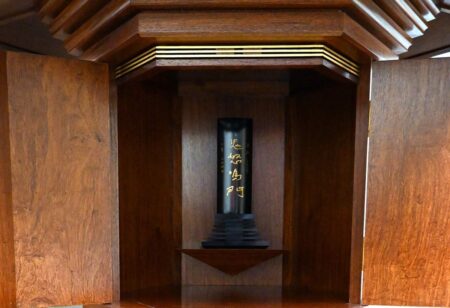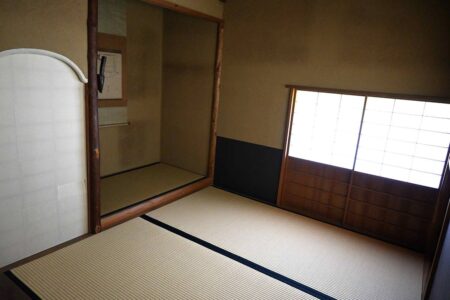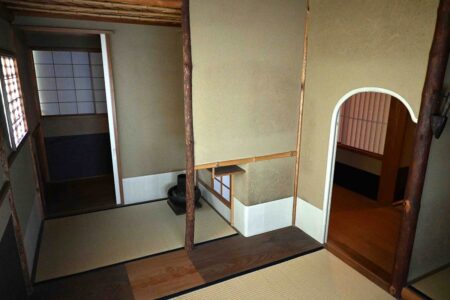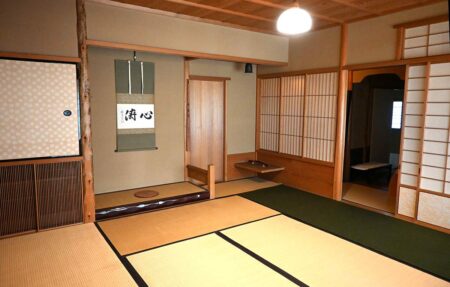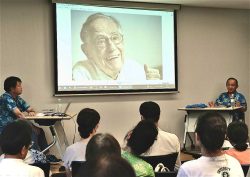Artisans Craft Unique Buddhist Altar for Donald Keene; Urushi Lacquer Artist, Master Builder Combined Their Skills
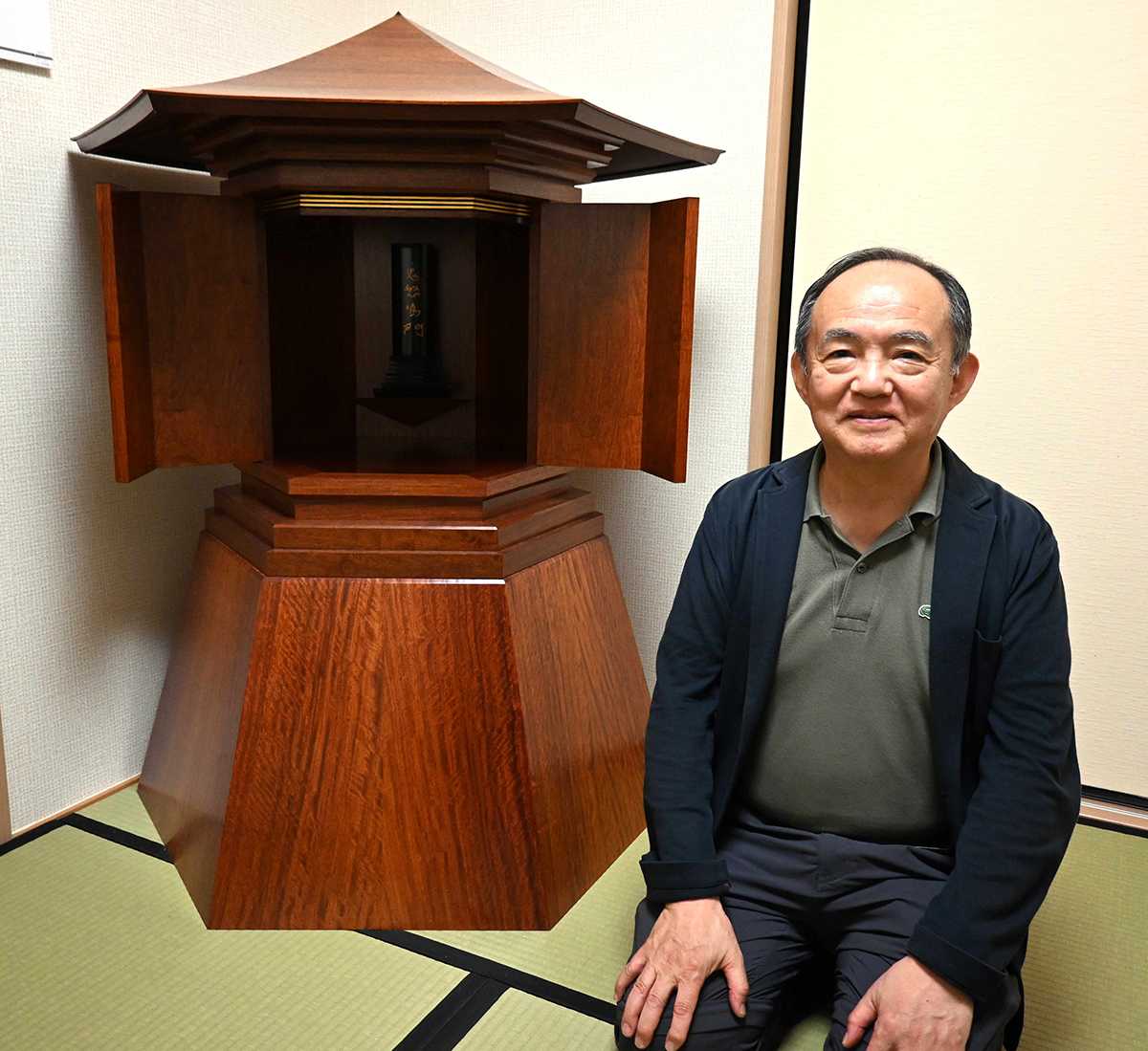
Seiki Keene sits beside Donald Keene’s unique Buddhist altar in an apartment in Kita Ward, Tokyo, where Keene lived for many years. (Photo taken June 29.)
15:55 JST, July 17, 2024
A unique Buddhist altar with a hexagonal roof sits in a Kita Ward, Tokyo, apartment that for nearly half a century was Donald Keene’s home and base in Japan. Kazumi Murose, 73, an urushi lacquer artist and living national treasure, and Mikihisa Kinoshita, 66, a sukiya-zukuri master builder, created the piece as a posthumous gift for Keene, who introduced the charms of Japanese literature to the world and died in 2019 at age 96.
It took about three years to complete the work, and in March of this year, the two artisans presented it to Seiki Keene, 74, Keene’s adopted son.
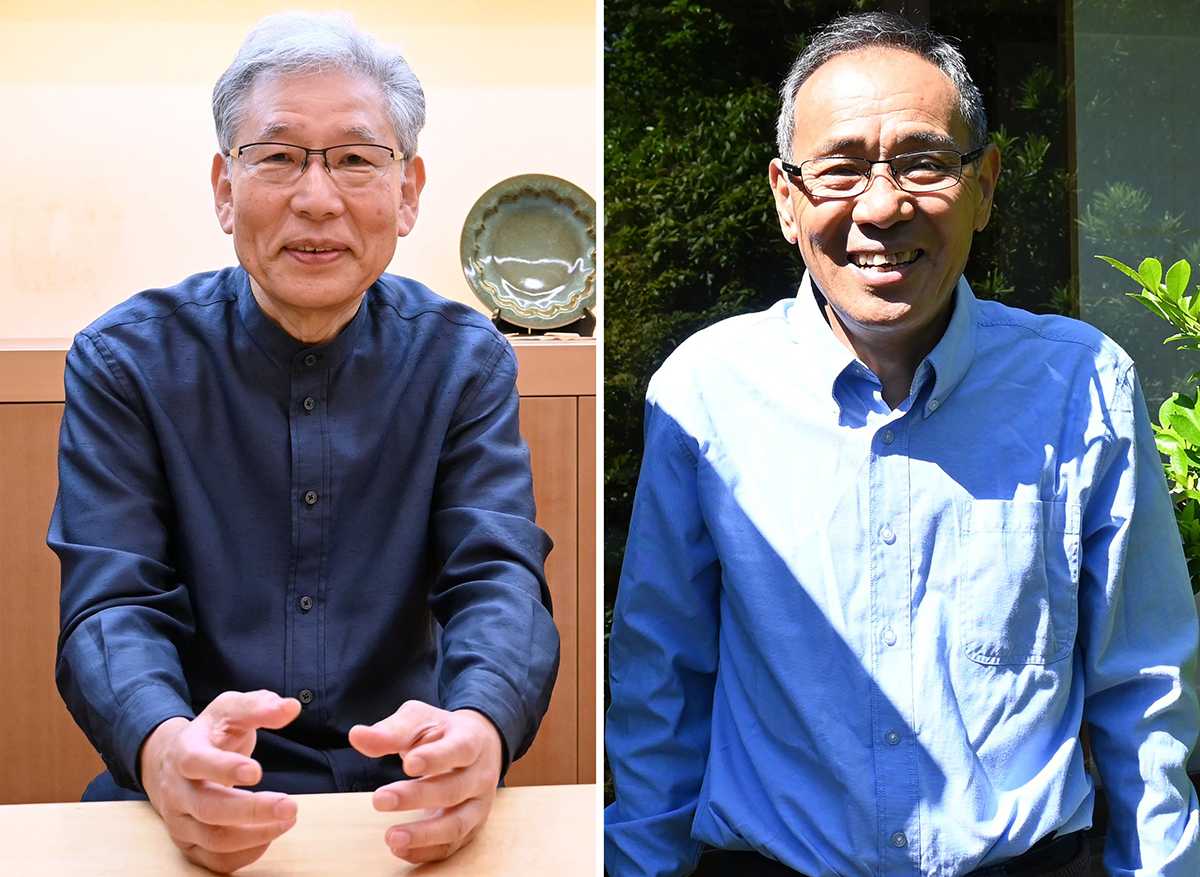
Left: Kazumi Murose, an urushi lacquer artist and living national treasure, shares memories of his heartwarming exchanges with Keene. (Photo taken May 24.). Right: Mikihisa Kinoshita, a master builder of sukiya-zukuri architecture, created a unique Buddhist altar with a hexagonal roof for Donald Keene. (Photo taken June 21.)
“I made it to be Mr. Keene’s home, his home after death,” Kinoshita said during an interview at his house in Kyotanabe, Kyoto Prefecture. “The living can change their residence, but it is not possible for the deceased to do so. I knew I couldn’t do a sloppy job.”
Built about 100 years ago, Kinoshita’s purely Japanese home has a tea ceremony room facing the garden. His field, sukiya-zukuri, is an architectural style based on the style of a Japanese tea ceremony house.
Kinoshita says he received a request from Seiki and his old acquaintance Murose to use his creativity to build a Buddhist altar that would be unique for Donald Keene.
Kinoshita had worked with Murose, whom he calls “Sensei,” to make a dining table for Keene during his lifetime. Kinoshita built the table and Murose lacquered it. After Keene’s death, Kinoshita also made Keene’s Buddhist memorial tablet. Kinoshita said, “I made the Buddhist tablet, so they wanted to ask me to make the Buddhist altar as well.”
-
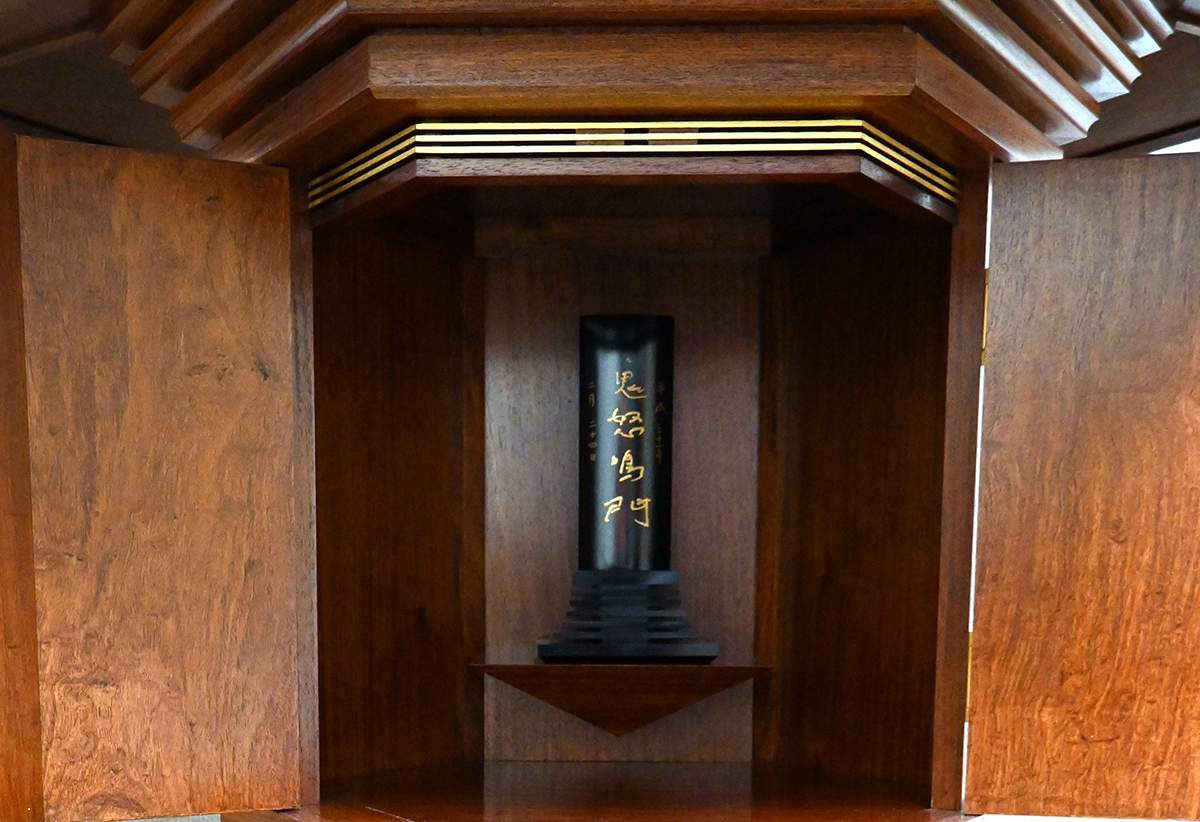
The tablet placed inside the Buddhist altar is double-sided, which is unusual in Japan. The side shown in the photo has Keene’s name written by himself in kanji characters, and the other side has his posthumous Buddhist name.
-
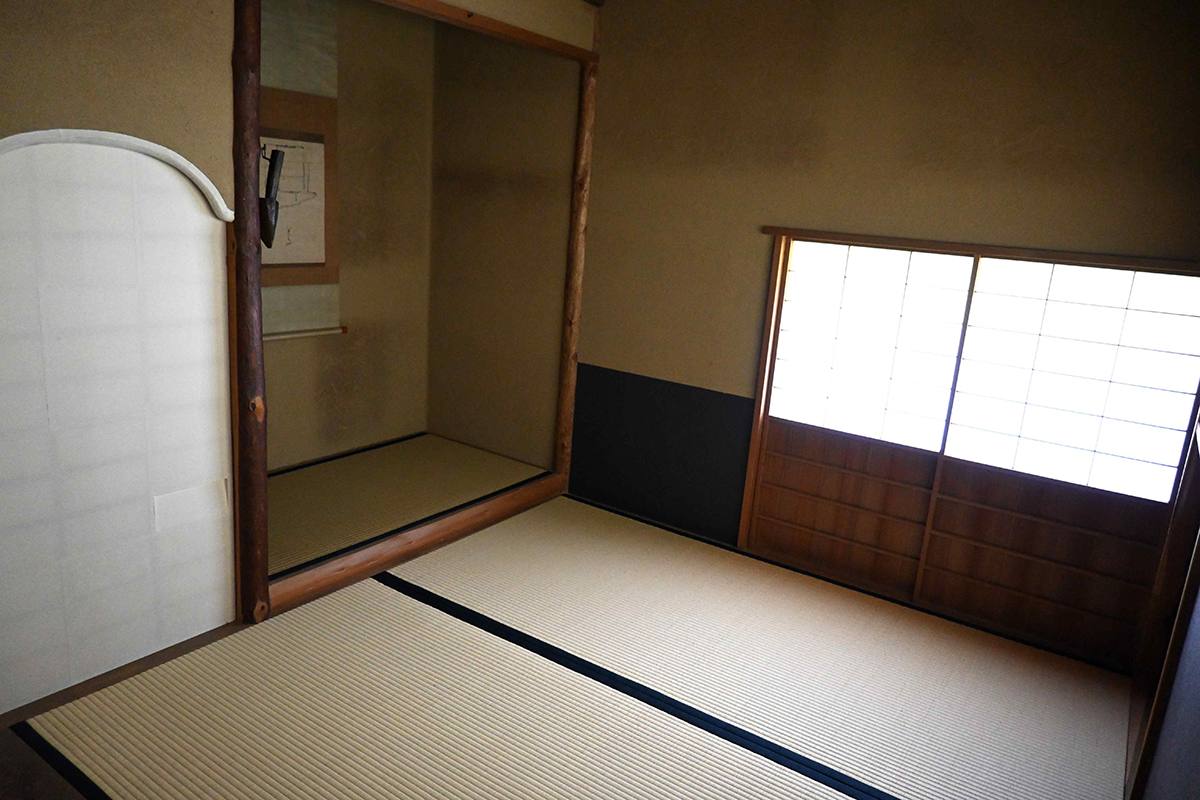
The tea ceremony room at Kinoshita’s home in Kyoto
-
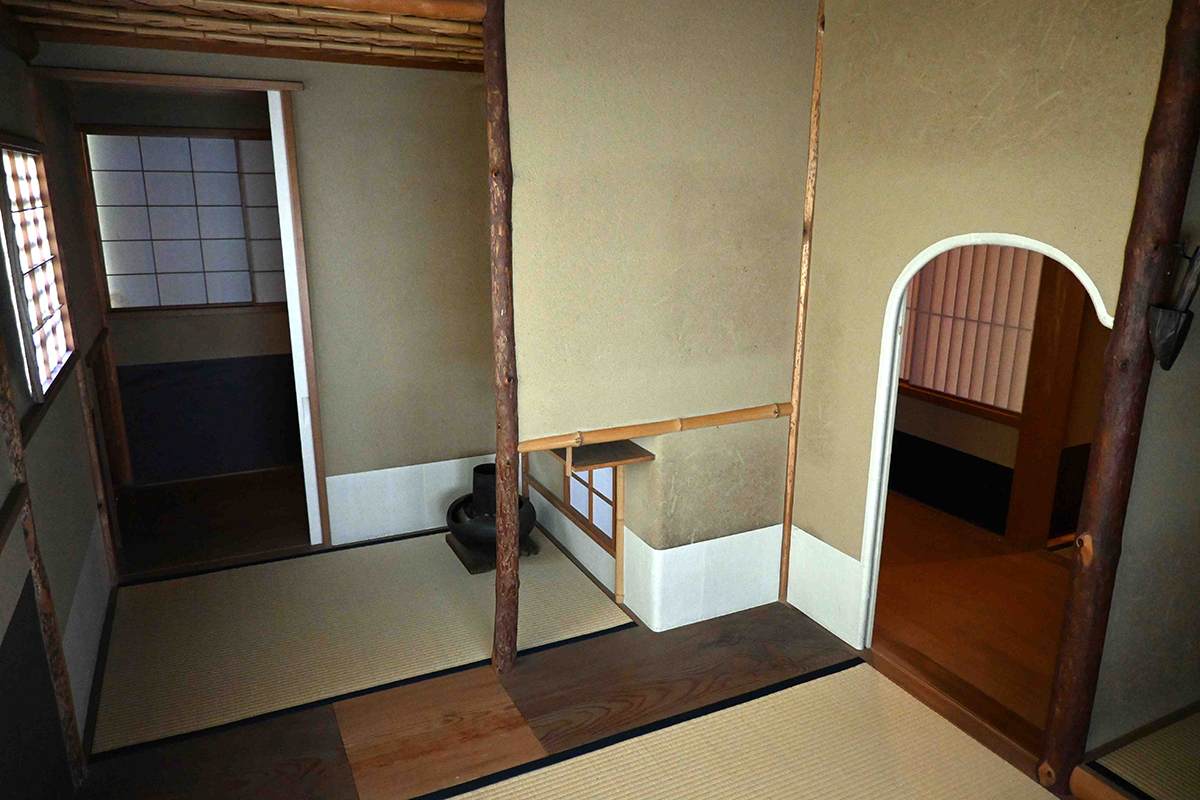
The tea ceremony room at Kinoshita’s home in Kyoto
-
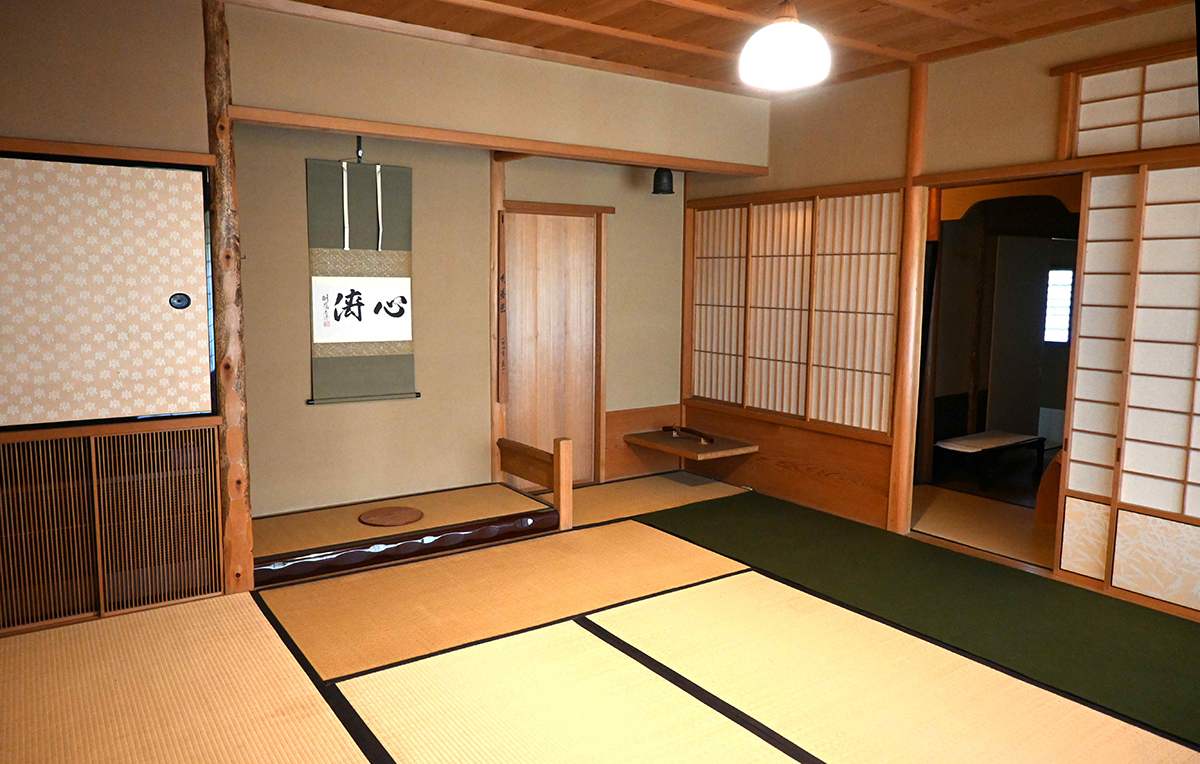
A room connected to the tea ceremony room at Kinoshita’s home in Kyoto
“Oh no, I was stumped. It took two years for the idea to solidify. I was thinking about it in my head all the time, even when I was traveling on the bullet train or sleeping,” said Kinoshita. Keene was a pioneer in introducing Japanese literature to the world, and he loved Japan. “I wondered what kind of house he wanted to live in.”
Kinoshita recalled that when he visited Keene’s grave, a yellow dog was carved on the tombstone, inspired by a dog that Keene had loved in his childhood. Seeing it gave him the strong feeling that he should not be bound by formality.
One day, Kinoshita’s mind was suddenly filled with the image of a Buddhist altar with a hexagonal roof. He created an image of a simple but one-of-a-kind Buddhist altar with a strong presence by considering the lines of the roof and the overall balance, utilizing the sukiya-zukuri technique. When he presented this image to Murose, he received a favorable response and began work on the project.
Kinoshita used only high-grade quince wood, and the door handles were custom ordered. Seiki covered the cost of materials, while Kinoshita and Murose worked diligently and without compensation in their spare time between jobs. Kinoshita made the parts in Kyoto, and Murose applied urushi lacquer several times in Tokyo, then assembled the parts to complete the piece.
The result of their work is approximately 125 centimeters tall and 100 centimeters wide. It is divided into an upper altar and a lower pedestal. Seiki recalled, “I was sincerely happy.”
“I wanted Mr. Keene, who became Japanese in his later years, to come into my Japanese house,” Kinoshita said with a smile.
Murose and Kinoshita’s collaborative work has not yet been completed. They are currently working on a front table where the deceased’s portrait and incense sticks will be placed. The altar, which the duo put their hearts and souls into, will be displayed at the Donald Keene exhibition to be held at the Setagaya Literary Museum in Tokyo from fall 2025 to 2026.
Friendship forged in Karuizawa

The Buddhist altar with beautiful roof lines seen from above
“Keene-san always came to me casually, saying, ‘Murose-san, I’m here,’” Murose recalled. Murose’s and Keene’s summer houses in Karuizawa, Nagano Prefecture, happened to be about a 10-minute walk apart. Keene sometimes dropped by Murose’s house with Seiki on an afternoon stroll. Seiki, a shamisen player, and Murose had known each other for a long time. Later, when Seiki was adopted by Keene, Murose’s friendship with Keene deepened.
During such visits, Keene told stories with a friendly smile. In one example, he said, “In the Edo period, bread came to Japan from Portugal, and less than 30 years later, there was an article in Portugal saying that the best bread in the world was made in Edo.” Conversations continued over dinner and a glass of wine, often focusing on pleasant everyday topics rather than heavy literary themes.
One day, Murose presented Keene with an urushi lacquered wooden bowl he had made, saying, “Eating rice with a ceramic rice bowl is a part of post-Meiji era culture, and it is traditionally best to use an urushi lacquered wooden bowl.” When Keene ate rice with it, he was very pleased, declaring it “delicious.”
Murose sincerely appreciates the time he spent with Keene, saying, “Although my association with Keene was brief in his later years, it was a heart-warming and valuable experience for me.”
Japanese version
ドナルド・キーンさんの仏壇は六角形、人間国宝と棟梁が作った「亡くなった後のマイホーム」
"JN Specialities" POPULAR ARTICLE
-

The Japan News / Weekly Edition (12/12-12/18)
-

English-language Kabuki, Kyogen Entertain Audiences in Tokyo; Portland State University Professor Emeritus, Graduates Perform
-

Noodle Dining Shunsai / Rich Oyster Ramen to Savor at Odasaga; Experienced 68-year-old Owner Creates Numerous Ramen Varieties
-

The Japan News / Weekly Edition (12/5-12/11)
-

People Keep Loved Ones’ Ashes Close in Special Jewelry, Small Urns as Unique Way to Memorialize Them
JN ACCESS RANKING
-

Keidanren Chairman Yoshinobu Tsutsui Visits Kashiwazaki-Kariwa Nuclear Power Plant; Inspects New Emergency Safety System
-

Imports of Rare Earths from China Facing Delays, May Be Caused by Deterioration of Japan-China Relations
-

University of Tokyo Professor Discusses Japanese Economic Security in Interview Ahead of Forum
-

Japan Pulls out of Vietnam Nuclear Project, Complicating Hanoi’s Power Plans
-

Govt Aims to Expand NISA Program Lineup, Abolish Age Restriction
